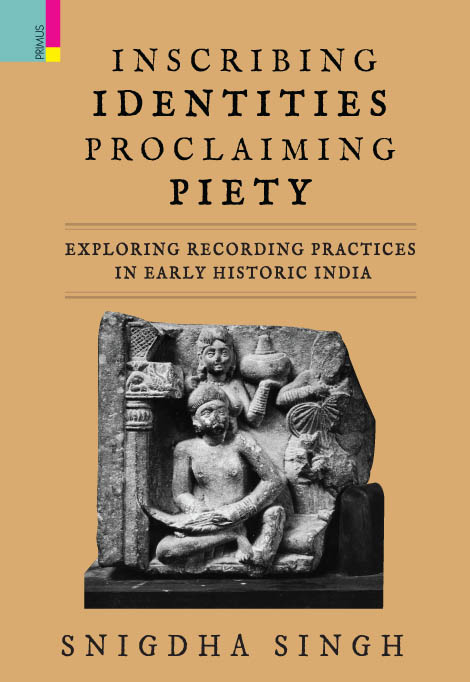Inscribing Identities, Proclaiming Piety: Exploring Recording Practices in Early Historic India by Snigdha Singh

Inscribing Identities, Proclaiming Piety: Exploring Recording Practices in Early Historic India
AUTHOR- Snigdha Singh
| HB ₹11550 |
||
INFORMATION
- AUTHOR : Snigdha Singh
- HB ISBN : 978-93-5553-290-9
- Year : 2022
- Extent: 502
- Discount available on checkout
- Usually dispatched within 3 to 5 working days.
Inscribing Identities, Proclaiming Piety: Exploring Recording Practices in Early Historic India focuses on votive inscriptions from the second century BCE to the second century CE found in four areas: Bharhut, Sanchi, the Western Ghats and Mathura. In Barhut and Sanchi, votive inscriptions have been found on the architecture of the stūpas and in Mathura on statues, while they have been found in caves and tanks along the Western Ghats.
Focusing on the differences between the ecclesiastic and the laity, this volume examines and highlights the gendered differences within them. Gender relations have been constructed and analysed on the basis of markers such as occupation, place of residence and kindship patterns of monastic and lay donors. The book is an attempt to understand how the donated gifts were gendered, and how nuances of social identification made the construction of social identity a striking one. Its focal points are the social complexities within and without the sangha along with ideas of agency and social identity irrespective of varṇa identity.
The Author
Snigdha Singh is Associate Professor in the Department of History at Miranda House, University of Delhi. Her research interests include gender relations represented in inscriptions and visual sources, with a special focus on the early historic period. She has co-authored two books: Beyond the Woman Question: Reconstructing Gender Identities in Early India (2018) and ‘Waters’ of Western Rajasthan: Myth, Tradition, Life and Livelihood (2020).
‘Snigdha Singh’s book forces us to revisit the complex social world of monks and nuns on the one hand and laymen and women on the other. The book will immensely help any reader to have a nuanced understanding of the concepts of ‘patronage’ and ‘matronage’. The tables prepared for each chapter might generate interest among young researchers for further probing.’
–Suchandra Ghosh, The Book Review




